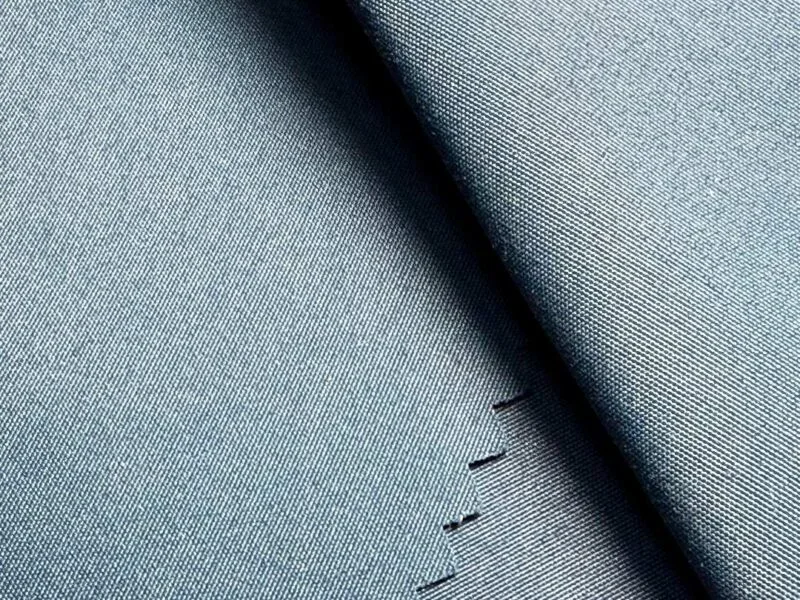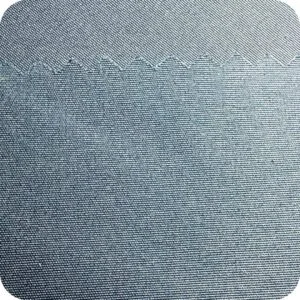
Polyester-nylon-cotton fabrics, commonly referred to as “T/C blends,” have become a popular choice across various industries due to their remarkable combination of durability, comfort, and versatility. However, as with any blended fabric, these textiles present specific challenges, particularly in terms of colorfastness. This article explores the colorfastness issues faced with polyester-nylon-cotton fabrics, offers solutions to improve dye retention, highlights the benefits of these fabrics, and examines their broad range of applications. From everyday apparel to specialized garments, polyester-nylon-cotton fabrics continue to redefine textile innovation.
Understanding Polyester-Nylon-Cotton Fabrics
Polyester-nylon-cotton fabrics are a tri-blend made by combining synthetic fibers (polyester and nylon) with natural cotton fibers. This blend capitalizes on the strengths of each material: polyester provides durability, nylon adds elasticity and moisture resistance, while cotton contributes breathability and softness. Companies like fabrics-fty.com and textile-fty.com offer advanced T/C fabrics that meet modern performance and aesthetic standards.
Colorfastness Challenges in Polyester-Nylon-Cotton Fabrics
Colorfastness refers to a fabric’s ability to retain its color when exposed to washing, sunlight, or rubbing. Blended fabrics often pose unique challenges because each component fiber reacts differently to dyeing processes. Polyester and nylon, being synthetic, require different dyes and heat settings compared to cotton. This difference can result in uneven color absorption, fading, or bleeding.
Common Colorfastness Problems:
1.Uneven Dyeing: Different dye absorption rates between synthetic and natural fibers.
2.Fading: Exposure to sunlight or chemicals during washing can weaken dyes.
3.Bleeding: Poorly fixed dyes may bleed onto other fabrics during laundering.
4.Abrasion Loss: Friction can cause dyes to wear off in high-contact areas.
Solutions to Improve Colorfastness
Addressing colorfastness issues in polyester-nylon-cotton fabrics involves a combination of advanced dyeing techniques, chemical treatments, and proper fabric care.
1. Pre-Treatment of Fibers
Pre-treating polyester and nylon with surface modifications enhances dye uptake and ensures even color application. Techniques such as plasma treatment or UV irradiation are highly effective.
2. Selection of Specialized Dyes
Choosing dyes specifically formulated for tri-blend fabrics, such as disperse-reactive dye systems, ensures better penetration and bonding to each fiber type.
3. High-Temperature Dyeing
Using high-temperature dyeing methods allows synthetic fibers like polyester and nylon to absorb color evenly. This also helps fix the dye in cotton, reducing color bleeding.
4. Chemical Fixatives
Applying chemical fixatives post-dyeing enhances the bonding of dyes to fibers, ensuring longevity and reducing bleeding or fading during washing.
5. Quality Control Testing
Regular quality checks during production, such as lightfastness and washfastness testing, ensure that the fabric meets high color retention standards.
6. Care Recommendations
Educating consumers about proper washing methods, such as using mild detergents and cold water, can minimize fading and bleeding.
Advantages of Polyester-Nylon-Cotton Fabrics
1. Durability
The combination of polyester and nylon makes these fabrics exceptionally durable, resistant to tearing, and long-lasting, even with frequent use.
2. Softness and Comfort
Cotton in the blend provides natural softness, enhancing comfort and making the fabric ideal for apparel that touches the skin.
3. Moisture Management
Nylon’s moisture-wicking properties, combined with cotton’s breathability, ensure these fabrics are suitable for activewear and outdoor clothing.
4. Wrinkle Resistance
The polyester component prevents excessive wrinkling, making these fabrics low-maintenance and easy to care for.
5. Versatility
Polyester-nylon-cotton blends can be adapted for various uses, from lightweight shirts to heavy-duty outerwear, by adjusting the ratio of fibers and weave structure.
6. Eco-Friendly Options
With the availability of #RecycledFabric and #GRSCertifiedFabric options, polyester-nylon-cotton blends can now align with sustainability goals.
Applications of Polyester-Nylon-Cotton Fabrics
Polyester-nylon-cotton fabrics are used in a wide range of applications, thanks to their balance of performance, comfort, and aesthetic appeal.
1. Casual Wear
The softness and breathability of these fabrics make them perfect for casual shirts, t-shirts, and trousers. The durability ensures they withstand frequent washing and wear.
2. Workwear and Uniforms
For industries requiring robust and reliable uniforms, polyester-nylon-cotton fabrics offer abrasion resistance, ease of maintenance, and color retention.
3. Activewear
These fabrics are excellent for sportswear and outdoor apparel due to their moisture-wicking and quick-dry properties. From running gear to yoga pants, the stretch and comfort are unmatched.
4. Outerwear
Water-repellent finishes can be added to these blends, making them suitable for jackets, windbreakers, and coats. Their strength and wrinkle resistance make them ideal for travel apparel.
5. Children’s Clothing
Soft and hypoallergenic, T/C blends are safe and comfortable for kids’ wear, including school uniforms and casual outfits.
6. Specialized Clothing
Industries such as healthcare and hospitality benefit from these fabrics for scrubs, chef uniforms, and housekeeping apparel, thanks to their easy-care properties.
7. Military and Tactical Gear
Durable, moisture-wicking, and quick-drying, these fabrics are ideal for military uniforms, backpacks, and other tactical gear.
8. Fashion
Polyester-nylon-cotton blends are increasingly used in fashion, combining practicality with style. The fabric can be printed, embroidered, or textured for unique designs.
9. Home Textiles
These blends find applications in home textiles such as upholstery, curtains, and bed linens due to their durability and aesthetic versatility.
10. Lightweight Outerwear
Lightweight jackets and windbreakers crafted from polyester-nylon-cotton blends provide comfort and functionality for everyday wear.
Why Choose Polyester-Nylon-Cotton Fabrics?
The versatility of polyester-nylon-cotton fabrics makes them indispensable across industries. By addressing colorfastness issues with innovative solutions, these textiles deliver unmatched quality and performance. Whether you’re designing stylish casual wear or durable workwear, these blends provide an excellent foundation. For high-quality polyester-nylon-cotton fabrics, explore the collections at fabrics-fty.com and textile-fty.com, trusted names in textile innovation.
Conclusion
Polyester-nylon-cotton fabrics embody the perfect balance of comfort, durability, and versatility. By addressing their colorfastness challenges and leveraging advanced dyeing technologies, these fabrics offer long-lasting, vibrant options for various applications. From casual wear to activewear and outerwear, polyester-nylon-cotton fabrics continue to revolutionize the textile industry, proving that functionality and style can coexist seamlessly.
#ColorfastFabric #DurableFabric #MoistureWickingFabric #ActivewearFabric #VersatileTextiles #BlendedFabrics #HighQualityFabrics #EasyCareFabric #FunctionalFabric #RecycledFabric


